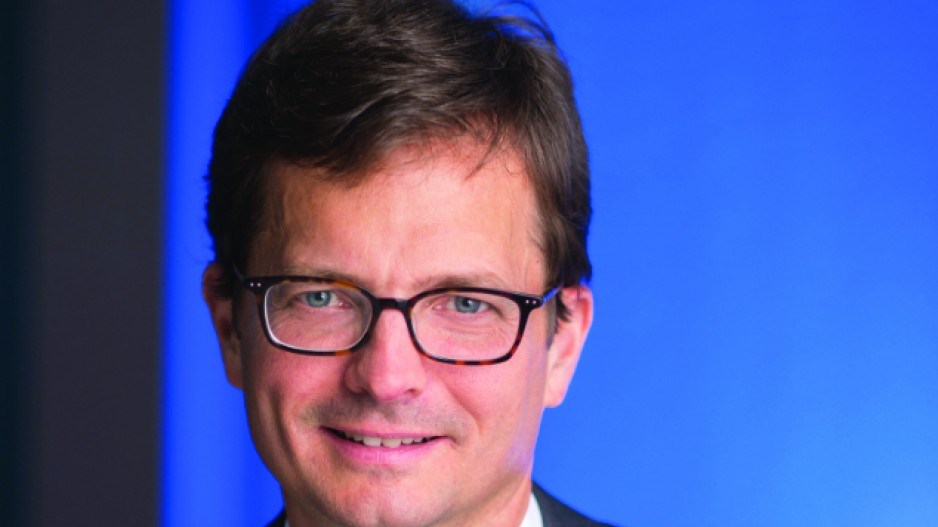There are dozens of Crown corporations in B.C., only a handful of which provide significant income for the provincial government.
But two of them are no longer in any position to pay dividends and have required taxpayer bailouts – although those bailouts might never have been needed had the previous BC Liberal government not siphoned off billions in dividends from Crowns that were in no position to pay them, according to the BC NDP government.
One of the challenges that the John Horgan government has been tackling is getting ICBC and BC Hydro back on a sound financial footing.
Its first step was to wipe more than $2 billion off the books of ICBC and BC Hydro. It was a bit of triage to stem the immediate bleeding, particularly at ICBC, but longer-term rehabilitation will be needed.
One of the challenges will be helping the Crown corporations get back into better fiscal shape, but without interfering with another Crown corporation: the BC Utilities Commission (BCUC), the watchdog responsible for providing oversight for things like rate increases.
After all, it was the previous Liberal government’s sidelining of the BCUC that partially contributed to the problems at ICBC and BC Hydro in the first place – that and, according to Attorney General David Eby, using the Crowns “like an ATM machine.”
Only a handful of Crown corporations are profitable enough that they have returned annual dividends to the B.C. government.
The most profitable are the BC Lottery Corp. (BCLC) and BC Liquor Distribution Branch (BCLDB). For the 2017-18 fiscal year, B.C. Crown corporations paid $2.8 billion in dividends – $2.5 billion of that came from the BCLC and BCLDB.
Surprisingly, the B.C. government still took $159 million from BC Hydro in dividends, despite the government’s concerns that the Crown had piled up more than $5 billion in deferral accounts. That’s future revenue that will be required to pay for infrastructure like dams and transmission lines, but which has been bumped into the future accounts. The use of “rate-regulated accounting” makes the Crown’s current books look healthier than they are by putting off revenue requirements (i.e., rate hikes) into the future.
The use of deferral accounts is standard practice for utilities. In BC Hydro’s case, it has been how and to what extent they have been used that has concerned B.C. auditor general Carol Bellringer. It’s something the BCUC might have had something to say about had the previous Liberal government not micromanaged the regulator.
“It needs to go through an appropriate regulatory process in order to determine what the numbers should be,” Bellringer said of BC Hydro’s use of deferral accounts.
To address concerns about BC Hydro’s large deferral accounts, the NDP government wrote off $950 million in the last provincial budget. While that might seem like a taxpayer bailout, it’s only half of what the provincial government took in under the Liberals in the last decade in dividends.
Since 2008, BC Hydro has paid the provincial government $2.1 billion in dividends.
BC Hydro CEO Chris O’Riley told Business in Vancouver that this is the last year that it will pay dividends to the B.C. government, and Hydro has plans to recover about $400 million a year on the deferral accounts.
He added that it will not pay dividends until its debt-to-equity ratio is 60-40. That ratio is currently 79-21.
“That’s a long-term plan,” he said. “That won’t be until the ’30s.”
As for ICBC, it faced a $1.3 billion shortfall in its last fiscal year. Again, the taxpayer has covered that deficit.
According to Eby, ICBC’s biggest problem was the former CEO’s decision to fight every claim in court. That merely delayed paying out successful claims.
“It did have the effect of deferring liabilities into the future,” Eby said. “Nobody got paid because everything was in court. It worked for a number of years, quite successfully. ICBC had record profits to an embarrassing level.”
The former Liberal government ended up taking about $1 billion from ICBC’s reserves, Eby said, because the Crown insurance corporation appeared to be in sound financial shape.
“Then the cases have started to conclude. And that has led to this remarkable escalation in ICBC’s shortfalls, compounded by rising accident rates, compounded by the government’s rate-smoothing framework and on and on.”
The NDP government’s measures to reduce ICBC’s costs include:
•capping personal injury pain and suffering awards at $5,500;
•sending personal injury claims worth $50,000 or less to a tribunal, not court; and
•hiring more investigators to crack down on auto repair shop fraud.
But even with those measures, ICBC may still need to resort to premium increases, and the challenge for the government will be resisting the temptation to meddle with the BCUC, should it approve large premium hikes. That’s something Bellringer has raised concerns over in the past.
“I do understand the temptation to override the regulator … because of the political impact of significant rate increase on constituents,” Eby said. “But I also recognize the impact of that has been quite catastrophic in relation to Hydro’s finances and ICBC’s finances.”
As for Crown corporation dividends, Eby said his government has vowed to keep its hands off any future ICBC profits so that they can be used to keep auto insurance premiums down.
“If ICBC becomes profitable – which at this point is a big if – then the profits should be returned to drivers in the form of lower rates.”
But Eby admitted that there is nothing in legislation that will oblige his government, or successive ones, to live up to that commitment.




